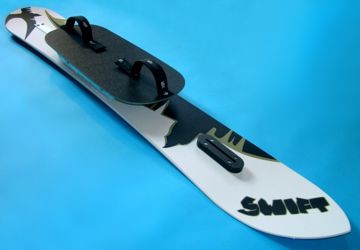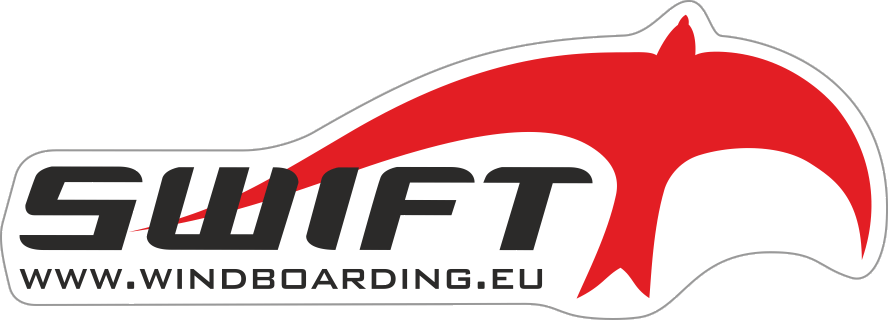EQUIPMENT DESCRIPTION
SWIFT Windboards are designed for windsurfing on snow, or on ice covered by a snow layer (at least 3cm thick). The common WS rig is used, and its size and type should be chosen appropriately based on the rider's weight and current conditions. We also recommend to use a harness and safety elements, mostly a helmet and a back protector.
 Constructionally, the windboard itself is derived from a common snowboard, but it has several differences.
Constructionally, the windboard itself is derived from a common snowboard, but it has several differences.
It is much longer and also has a different shape, profile of deflexion and hardness.
The windboard is equipped with a mast track for fixing the rig with the aid of a standard mast base.
There is also a large standing deck with footstraps attached to the board.
The board is also equipped with a hardened steel fin, which is simple to change according to the current snow type.
RIDING CHARACTERISTICS



 The way of riding is that if the board is flat on the snow, the fin is used, which optimizes the position of the lateral force, the board goes straight, but can be controlled by tilting the rig.
The way of riding is that if the board is flat on the snow, the fin is used, which optimizes the position of the lateral force, the board goes straight, but can be controlled by tilting the rig.
Wheng going upwind, we also can use a technique of backside edge riding: We tilt the board up to the backside and at the same time move the rig forward to keep straight course. The resistance will decrease and the speed goes up.
But the board tipping is primarilly used for turns: When we tilt the board, the fin more or less rises above the snow and the edge comes into play by carving a turn, whose radius we can control by the tilt angle of the board.
The windboard allows a high speed stright riding, carving turns and execution of freestyle tricks, e.g. Power Jibe, Duck Jibe, Heli Tack and others.
